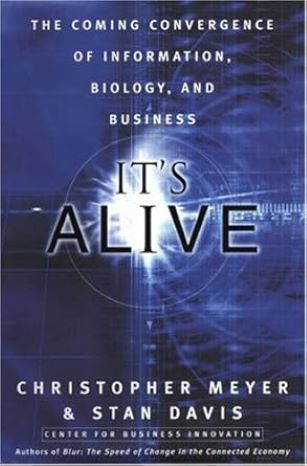Shopping Cart
-
${ item.product_title }$ ${item.price}


People are viewing this right now
"It's Alive: The Coming Convergence of Information, Biology and Business" by Chris and Davis Stan Meyer explores the intersection of information technology and biological sciences, predicting the future of innovation and business through this convergence. The authors argue that today's cutting-edge research will shape the next decade's breakthroughs, much like how Xerox's Palo Alto Research Center foreshadowed today's connected society back in 1971.
The book is structured into several parts, starting with an exploration of economic evolution and learning from biological life cycles. It then delves into the parallels between general evolution in nature and the emerging fields of biotechnology, nanotechnology, and materials science. Throughout, it emphasizes the concept of the adaptive enterprise, drawing analogies from evolutionary biology to prescribe strategies for organizational agility and innovation.
Key organizational examples, such as Capital One and Maxygen, illustrate practical applications of biological and information sciences principles in business settings. These examples highlight strategies like self-organization, learning and adaptation, and leveraging innovation seeds to amplify organizational capabilities.
One of the book's intriguing aspects is its exploration of advanced experiments and technologies, such as artist Eduardo Kac's incorporation of biblical text into DNA sequences inserted into live bacteria, demonstrating the possibilities of technological convergence.
The book concludes with speculative insights into future applications of convergent technologies, such as matter compilers and personal hospitals, along with guiding principles for organizations to embrace agility, simplicity, and communication.
Overall, "It's Alive" provides a forward-looking perspective on how biological and information sciences will continue to merge, offering actionable insights for large organizations poised to invest in complex technologies, while stimulating thought on how these principles can be adapted by smaller entities with limited resources.